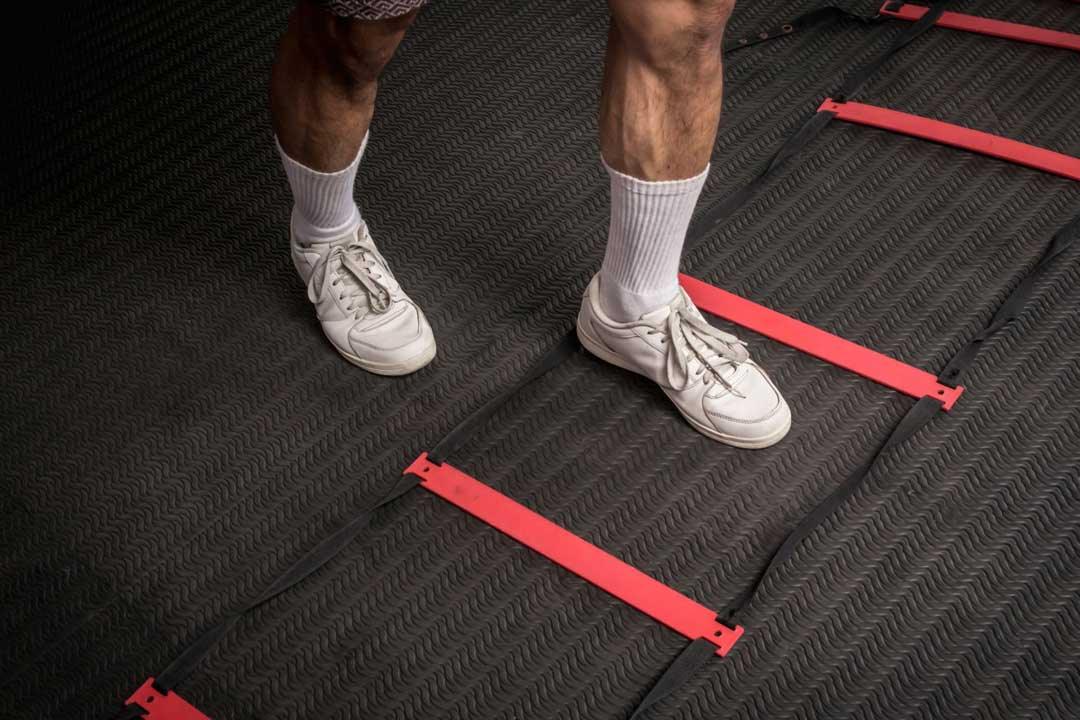
Pickleball Footwork: Techniques for Better Movement
Share
Introduction
Footwork is often the unsung hero of successful pickleball play. While much attention is given to paddles, shots, and strategy, the ability to move efficiently on the court can make or break your game. Proper footwork not only enhances your ability to reach the ball but also ensures that you maintain balance and control throughout the match. This article delves into the techniques and drills that can elevate your footwork, ultimately improving your overall performance on the pickleball court.
The Importance of Footwork in Pickleball
Why Footwork is Crucial for Success
In pickleball, your feet are your foundation. Whether you're dashing to the net for a volley or retreating to return a deep shot, how you move across the court directly affects your ability to make effective plays. Good footwork allows you to be in the right place at the right time, giving you the best chance to execute your shots with precision. Without it, even the most skilled players can find themselves out of position and struggling to keep up with the pace of the game.
Common Footwork Mistakes and Their Impact
One of the most common footwork mistakes in pickleball is failing to stay on the balls of your feet. This makes it difficult to react quickly, causing delays in your movement. Another mistake is crossing your feet when moving laterally, which can lead to loss of balance and slow response times. These errors not only affect your speed and agility but also increase the risk of injury. By understanding and correcting these mistakes, you can enhance your overall court coverage and performance.
The Basics of Proper Stance
Understanding the Ready Position
The ready position is the cornerstone of good footwork in pickleball. It involves standing with your feet shoulder-width apart, knees slightly bent, and weight evenly distributed on the balls of your feet. Your paddle should be held out in front of you, ready to react to any incoming shot. This stance allows for quick movements in any direction, making it easier to respond to your opponent's shots.
Balancing Weight for Quick Reactions
Proper weight distribution is key to maintaining balance and enabling quick reactions. Your weight should be slightly forward, allowing you to push off quickly when moving towards the ball. Avoid leaning too far forward or backward, as this can throw off your balance and slow down your reaction time. Practice shifting your weight smoothly from one foot to the other, as this will help you stay light on your feet and ready to move at a moment’s notice.
Lateral Movement Techniques
Side Shuffling for Court Coverage
Side shuffling is a fundamental movement technique in pickleball, allowing you to move quickly and efficiently from side to side. When side shuffling, keep your feet parallel and your body low, taking small, quick steps to maintain balance. This technique is particularly useful for covering the width of the court during rallies, as it enables you to stay facing your opponent while moving laterally.
The Crossover Step for Speed and Efficiency
The crossover step is another essential movement for improving your lateral speed on the court. This involves crossing one foot over the other to cover more ground quickly. The key to executing a successful crossover step is to maintain your balance and avoid overcommitting to one direction. By practicing this technique, you can enhance your ability to reach wide shots and return them with control.
Forward and Backward Movement
Mastering the Split Step for Quick Start
The split step is a critical move for reacting quickly to your opponent's shots. As your opponent hits the ball, perform a small hop, landing with your feet shoulder-width apart and your weight on the balls of your feet. This position primes you to move in any direction, allowing you to respond to the ball more quickly and effectively.
Proper Backpedaling to Maintain Control
Backpedaling is essential when you need to move backward while maintaining your stance and balance. Keep your body low, your steps small and quick, and your eyes on the ball. Avoid crossing your feet or turning your back to the net, as this can compromise your ability to react to your opponent's next shot. Proper backpedaling ensures that you can retreat without losing control or leaving yourself vulnerable to a well-placed shot.
Pivoting and Changing Direction
Techniques for Smooth Pivots
Pivoting allows you to change direction quickly without losing balance. When pivoting, plant one foot firmly on the ground while using the other foot to turn your body in the desired direction. Keep your movements smooth and controlled to avoid unnecessary strain on your joints. Mastering the pivot is essential for responding to unexpected shots and maintaining your positioning on the court.
Anticipating Your Opponent’s Shots
Good footwork is not just about reacting but also about anticipating where the ball will go. By reading your opponent’s body language and shot trajectory, you can position yourself more effectively. This anticipation reduces the distance you need to cover, allowing you to make your moves more efficiently and with greater confidence.
Footwork Drills to Improve Agility
Cone Drills for Precision and Speed
Cone drills are an excellent way to enhance your footwork precision and speed. Set up a series of cones in various patterns on the court and practice moving around them as quickly as possible. Focus on keeping your movements tight and controlled, as this will improve your ability to navigate the court during a match. These drills help to build the muscle memory needed for efficient footwork.
Ladder Drills for Coordination and Quickness
Ladder drills are another effective tool for improving coordination and quickness. Place a ladder flat on the ground and practice moving your feet in and out of the rungs as quickly as possible. These drills challenge your foot speed and coordination, both of which are crucial for executing quick, precise movements on the court. Incorporating ladder drills into your routine can significantly boost your agility.
The Role of Footwork in Doubles Play
Coordinating Movement with Your Partner
In doubles play, coordinating your movement with your partner is essential. Good communication and synchronized footwork allow you to cover the court more effectively and avoid leaving gaps in your defense. Practice moving in unison with your partner, whether it’s shifting laterally or advancing toward the net. This teamwork enhances your ability to maintain control and capitalize on opportunities during the game.
Covering the Court Efficiently as a Team
Efficient court coverage in doubles requires an understanding of your partner's strengths and weaknesses. By positioning yourselves strategically, you can minimize the distance each player needs to cover. This not only conserves energy but also ensures that you’re both in the best possible position to return the ball. Developing a strong sense of teamwork and footwork coordination is key to success in doubles play.
Footwork in Offensive vs Defensive Play
Aggressive Footwork for Attacking Shots
When playing offensively, your footwork should be aggressive and assertive. Move quickly towards the ball, taking large, confident steps to position yourself for an attacking shot. Your goal is to put pressure on your opponent by taking control of the rally. By practicing aggressive footwork, you can improve your ability to execute powerful, well-placed shots that keep your opponent on the defensive.
Defensive Footwork for Retrieving Difficult Balls
On the defensive, your footwork needs to be more cautious and controlled. Focus on maintaining your balance and positioning yourself to return difficult shots. Small, quick steps are often more effective than larger, slower movements when defending. By refining your defensive footwork, you can improve your ability to stay in the rally and force your opponent to make errors.
The Impact of Footwear on Footwork
Choosing the Right Shoes for Optimal Movement
The right footwear can make a significant difference in your footwork. Choose shoes that provide good grip, support, and flexibility, allowing you to move confidently and efficiently on the court. Proper footwear not only enhances your footwork but also reduces the risk of injury, ensuring that you can play at your best without discomfort or strain.
How Proper Footwear Can Prevent Injury
In addition to improving your footwork, proper footwear plays a crucial role in injury prevention. Shoes with adequate cushioning and support help to absorb the impact of sudden movements and changes in direction, reducing the strain on your joints and muscles. Investing in high-quality pickleball shoes can help you avoid common injuries such as sprains, strains, and blisters, allowing you to stay on the court longer.
Practicing Footwork: Incorporating it into Your Routine
Setting Aside Time for Footwork Drills
To truly improve your footwork, it's important to dedicate time to practicing it regularly. Set aside a portion of your practice sessions specifically for footwork drills. Consistency is key, as regular practice helps to reinforce good habits and eliminate bad ones. By making footwork a priority, you’ll see noticeable improvements in your movement and overall game.
Combining Footwork with Other Skills Practice
Incorporating footwork into your other skills practice can also be highly effective. For example, practice your serves, volleys, and groundstrokes while focusing on maintaining proper footwork. This integration helps to create a more comprehensive training routine, ensuring that your footwork enhances all aspects of your game. The more you practice moving with purpose and control, the more natural it will become during actual matches.
Conclusion
Mastering footwork is an essential component of becoming a successful pickleball player. By understanding the importance of footwork, learning proper techniques, and practicing regularly, you can enhance your agility, speed, and control on the court. Whether you’re playing singles or doubles, offensive or defensive, your footwork will play a pivotal role in determining the outcome of your matches. Investing time in developing strong footwork will not only improve your game but also help you avoid injuries and enjoy the sport to the fullest.












